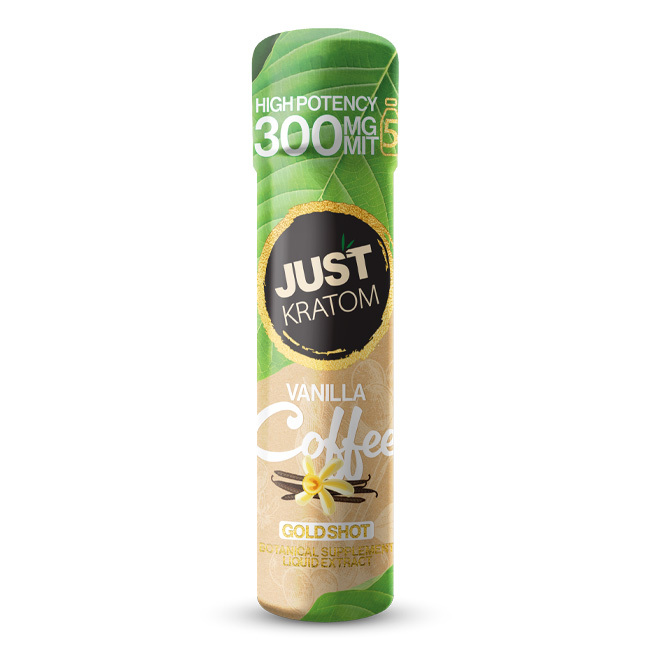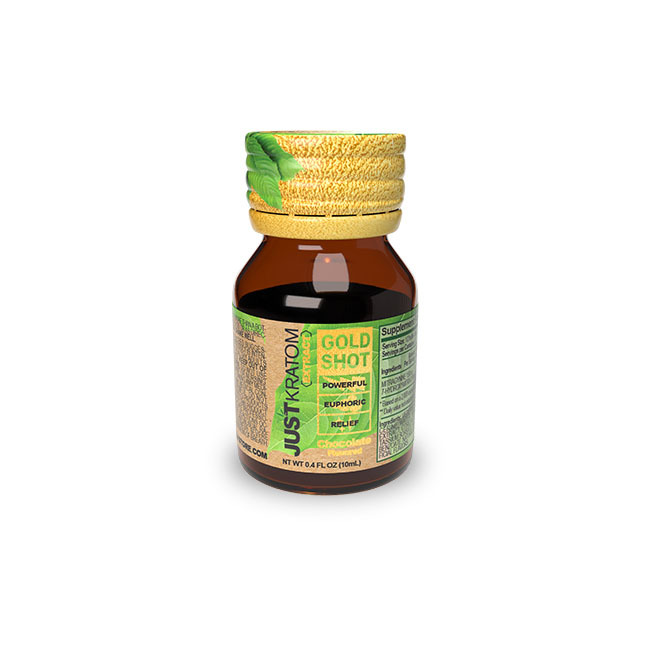The Active Compounds of Kratom

Kratom, derived from the Mitragyna speciosa tree, contains a diverse array of bioactive compounds that contribute to its various effects. Among these, mitragynine and 7-hydroxymitragynine are considered the primary active constituents responsible for kratom’s analgesic, stimulant, and sedative properties. These alkaloids interact with opioid receptors in the brain, producing a range of physiological responses.
Mitragynine
Mitragynine is an alkaloid found in Kratom, known for its significant impact on the human body. This compound binds to opioid receptors in the brain, mimicking the effects of opioids like morphine. This interaction leads to a variety of potential effects, including pain relief, euphoria, sedation, and increased energy.
The potency of mitragynine varies depending on factors such as the strain of Kratom, processing methods, and individual user response. Some studies suggest that mitragynine may also have potential therapeutic applications for treating conditions like chronic pain, anxiety, and depression.
7-Hydroxymitragynine
7-hydroxymitragynine is another significant alkaloid found in Kratom, sharing similarities with mitragynine in its interaction with opioid receptors. It is often considered to be even more potent than mitragynine, contributing to the overall effects of kratom.
While research on 7-hydroxymitragynine is ongoing, it is believed to possess analgesic, sedative, and euphoric properties, potentially offering benefits for pain management, relaxation, and mood elevation.
Other Alkaloids
Beyond mitragynine and 7-hydroxymitragynine, kratom contains a variety of other alkaloids that contribute to its complex effects. These compounds, while not as extensively studied, may play roles in modulating the overall experience.
- Psychotria speciosa: This alkaloid is found in small amounts in kratom and is believed to possess psychoactive properties.
- Mitraphylline: Known for its stimulant effects, this alkaloid may contribute to kratom’s potential as an energy booster.
- Speciogynine: This alkaloid has been found to have analgesic and anti-inflammatory properties.
Pharmacological Effects and Mechanisms
Pharmacological effects are the physiological responses that occur in a living organism after exposure to a drug. These effects arise from the drug’s interaction with specific targets within the body, often receptors or enzymes. Understanding pharmacological mechanisms is crucial for comprehending how drugs produce their therapeutic and adverse effects.
Opioid Receptors
Opioid receptors are a type of G protein-coupled receptor found throughout the central nervous system. They play a crucial role in pain modulation, reward processing, and other physiological functions.
Mitragynine and 7-hydroxymitragynine, the primary active alkaloids in kratom, exert their effects by binding to opioid receptors. They exhibit a complex interplay with different subtypes of these receptors, including mu, delta, and kappa. This interaction leads to a diverse range of pharmacological effects.
Activation of mu opioid receptors is associated with analgesia (pain relief), euphoria, sedation, and respiratory depression. Delta opioid receptor activation contributes to mood elevation, anxiolysis (reduced anxiety), and potential anti-inflammatory effects. Kappa opioid receptor activation can induce dysphoria (unpleasant feelings) and hallucinations.
The specific combination of receptor activations by mitragynine and 7-hydroxymitragynine likely contributes to the multifaceted effects observed with kratom use.
Serotonin Receptors
Pharmacological effects are the physiological responses that occur in a living organism after exposure to a drug. These effects arise from the drug’s interaction with specific targets within the body, often receptors or enzymes.
Opioid receptors are a type of G protein-coupled receptor found throughout the central nervous system. They play a crucial role in pain modulation, reward processing, and other physiological functions.
Mitragynine and 7-hydroxymitragynine, the primary active alkaloids in kratom, exert their effects by binding to opioid receptors. They exhibit a complex interplay with different subtypes of these receptors, including mu, delta, and kappa.
Activation of mu opioid receptors is associated with analgesia (pain relief), euphoria, sedation, and respiratory depression. Delta opioid receptor activation contributes to mood elevation, anxiolysis (reduced anxiety), and potential anti-inflammatory effects. Kappa opioid receptor activation can induce dysphoria (unpleasant feelings) and hallucinations. The specific combination of receptor activations by mitragynine and 7-hydroxymitragynine likely contributes to the multifaceted effects observed with kratom use.

Alpha2 Adrenergic Receptors
Pharmacological effects are the physiological responses that occur in a living organism after exposure to a drug. These effects arise from the drug’s interaction with specific targets within the body, often receptors or enzymes.
Opioid receptors are a type of G protein-coupled receptor found throughout the central nervous system. They play a crucial role in pain modulation, reward processing, and other physiological functions.
- Mu opioid receptors: Activation is associated with analgesia (pain relief), euphoria, sedation, and respiratory depression.
- Delta opioid receptors: Activation contributes to mood elevation, anxiolysis (reduced anxiety), and potential anti-inflammatory effects.
- Kappa opioid receptors: Activation can induce dysphoria (unpleasant feelings) and hallucinations.
Mitragynine and 7-hydroxymitragynine, the primary active alkaloids in kratom, exert their effects by binding to opioid receptors. They exhibit a complex interplay with different subtypes of these receptors, contributing to the multifaceted effects observed with kratom use.
Potency Enhancement in Gold Shots
Kratom, derived from the Mitragyna speciosa tree, is renowned for its diverse effects, attributed to its rich array of bioactive compounds. Among these, mitragynine and 7-hydroxymitragynine stand out as the primary active constituents responsible for kratom’s analgesic, stimulant, and sedative properties. These alkaloids exert their influence by interacting with opioid receptors in the brain, triggering a cascade of physiological responses.
Concentration of Mitragynine and 7-Hydroxymitragynine
Potency enhancement in gold shots refers to techniques employed to increase the concentration of mitragynine and 7-hydroxymitragynine, the primary active alkaloids responsible for kratom’s effects. These methods aim to deliver a more potent and concentrated dose compared to traditional kratom preparations.
The exact concentrations of mitragynine and 7-hydroxymitragynine in gold shots can vary depending on several factors, including the kratom strain used, extraction methods, and manufacturing processes. However, due to their potency enhancement techniques, these products typically contain a higher concentration of these alkaloids compared to standard kratom powder.
The increased concentration of mitragynine and 7-hydroxymitragynine in gold shots can lead to more pronounced and potentially faster-acting effects. Users may experience intensified pain relief, mood elevation, or stimulant effects.
Enhanced Absorption and Bioavailability
Enhanced absorption and bioavailability refer to methods designed to improve how the body takes in and utilizes active compounds from a substance like kratom.
Gold shots often employ techniques aimed at boosting both absorption and bioavailability. By increasing the rate at which these potent alkaloids are absorbed into the bloodstream and made available to the body, gold shots can enhance the overall effectiveness of the kratom experience.
One common technique used in gold shots is encapsulation or micronization, where kratom extracts are encased in tiny particles or encapsulated within a protective shell. This helps to protect the alkaloids during digestion and allows for more efficient absorption into the bloodstream.
Formulated Additives
Kratom Gold Shots utilize various techniques to enhance potency and bioavailability, aiming to deliver a more concentrated and effective dose compared to traditional kratom preparations.

Potency enhancement focuses on increasing the concentration of mitragynine and 7-hydroxymitragynine, the primary active alkaloids responsible for kratom’s effects. This is achieved through extraction methods that prioritize isolating these compounds.
Gold shots often employ encapsulation or micronization techniques to improve bioavailability. Encapsulation involves encasing kratom extracts in protective shells, safeguarding them during digestion and promoting efficient absorption into the bloodstream. Micronization reduces the size of kratom particles, increasing their surface area and allowing for faster and more complete dissolution.
By combining potency enhancement with strategies to optimize absorption, Gold Shots aim to deliver a more potent and impactful kratom experience.
Individual Variability and Dosage Considerations
Individual variability in response to kratom is significant, meaning that the effects of a given dose can vary widely from person to person. This variability stems from factors such as body mass, metabolism, genetics, and prior tolerance levels. Dosage considerations are crucial when using kratom, as both under-dosing may lead to insufficient effects, while over-dosing can result in adverse reactions.
Metabolic Differences
Individual variability in response to kratom is significant, meaning that the effects of a given dose can vary widely from person to person. This variability stems from factors such as body mass, metabolism, genetics, and prior tolerance levels. Dosage considerations are crucial when using kratom, as both under-dosing may lead to insufficient effects, while over-dosing can result in adverse reactions.
- Body Mass: Individuals with higher body mass may require larger doses to achieve the desired effects compared to those with lower body mass.
- Metabolism: Variations in metabolic rate influence how quickly the body processes kratom alkaloids. Faster metabolizers may need more frequent dosing.
- Genetics: Genetic differences can affect enzyme activity involved in metabolizing kratom compounds, leading to variations in response.
- Tolerance: Regular kratom use can lead to tolerance, requiring higher doses to achieve the same effects.
Tolerance Development
Individual variability in how people respond to kratom is significant. Factors like body mass, metabolism, genetics, and prior tolerance levels all play a role in determining the effects of a given dose.
Because of this variation, dosage considerations are crucial when using kratom. Taking too little may not produce the desired effect, while taking too much can lead to adverse reactions. It’s important to start with a low dose and gradually increase it until the desired effect is achieved.
Tolerance development is another factor to consider. Regular kratom use can lead to tolerance, meaning that higher doses are needed to achieve the same effects over time. This highlights the importance of adjusting dosage as needed and taking breaks from kratom use to allow tolerance to subside.
Potential Side Effects**
Individual variability in response to kratom is a significant factor. People metabolize compounds differently due to variations in body mass, metabolism rate, genetics, and prior experience with kratom (tolerance). These factors can influence how potent the effects are and how long they last.
Dosage considerations are essential for safe and effective use. It’s crucial to start with a low dose and gradually increase it until the desired effect is achieved. This allows individuals to gauge their personal tolerance and avoid potential adverse reactions.
Potential side effects of kratom can vary depending on dosage, individual sensitivity, and other factors. Some common side effects include:
- Nausea
- Constipation
- Headache
- Drowsiness
- Dry mouth
- Increased heart rate
- Anxiety (in some individuals)
In rare cases, higher doses of kratom can lead to more serious side effects such as:
- Seizures
- Respiratory depression (slowed breathing)
- Liver damage (with long-term or excessive use)
It’s important to consult with a healthcare professional before using kratom, especially if you have any pre-existing medical conditions or are taking other medications.
Further Research and Future Directions
Further research is crucial to fully elucidate the complex effects and potential therapeutic applications of kratom.
Some key areas that require further investigation include:
* **Detailed mechanisms of action:** While it is known that mitragynine and 7-hydroxymitragynine interact with opioid receptors, a deeper understanding of their precise binding affinities and downstream signaling pathways is needed. This will shed light on how these compounds produce specific effects and potentially identify novel therapeutic targets.
* **Long-term effects:** More research is needed to assess the long-term consequences of kratom use, including its potential impact on cognitive function, cardiovascular health, and liver function.
* **Safety and dosage guidelines:** Establishing clear safety guidelines and recommended dosages for different populations and medical conditions is essential. This will help to minimize the risk of adverse effects and ensure responsible use.
* **Individual variability in response:** Understanding the factors that contribute to individual differences in kratom response (e.g., genetics, metabolism) will allow for more personalized treatment approaches.
* **Interactions with other drugs:** Investigating potential interactions between kratom and other medications is crucial to avoid harmful drug combinations.
Additionally, exploring the potential therapeutic applications of kratom beyond pain management, such as in anxiety, depression, or addiction, warrants further exploration. Ethical considerations regarding kratom’s legal status and access also require ongoing discussion and research.
Shop Kratom Gold Shots for Increased Energy
- Why Do My Marionette Lines Look Worse After Fillers? - November 10, 2025
- What Is The Best Procedure For Neck Tightening? - November 7, 2025
- What Are The Best CBD Gummies For Mental Clarity And Focus? - November 5, 2025
